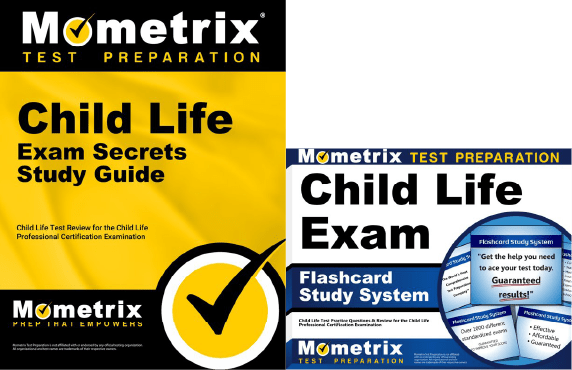If you need help studying for the Child Life Professional certification exam or just want some more information about what the exam is like, you’ve come to the right place.
Click below to take a free Child Life practice test!
Exam Eligibility
Before you can register to take the Child Life certification exam, you’ll have to obtain a bachelors degree and graduate from a child life academic program.
If you meet these requirements, you’re set to begin the registration process!
What’s on the Exam?
First, let’s talk about the questions on the exam. There are 150 multiple-choice questions total, but only 125 of the questions will count toward your score. Why is that?
The 25 unscored questions on the exam are called “pretest” questions. These are added to the exam to determine if they’re good enough questions to add to future versions of the test.
The trick is that you won’t have any way of knowing which questions are scored and which ones are pretest. They will appear just like the scored questions throughout the test.
The time limit for the exam is 4 hours. There aren’t any scheduled breaks, but you’re free to take restroom breaks as needed.
Let’s take a closer look at the different sections of the Child Life exam.
1. Professional Responsibility
26% of the exam
- Engaging in opportunities for continuous improvement in child life practice
- Adhering to standards of ethical practice
- Collaborating effectively with multi-disciplinary professionals
2. Assessment
37% of the exam
- Assessing and prioritizing children and families based on psychosocial risk and need
- Developing a comprehensive plan of care by assessing relevant health care and developmental data
- Developing a comprehensive plan of care by assessing family, cultural, and contextual variables
3. Intervention
37% of the exam
- Providing care that is patient- and family-centered
- Incorporating play theories and apply them to practice
- Providing education specific to individual needs
- Providing support through diagnosis, treatments, and transitions of care
- Providing support to those experiencing loss, grief, and/or bereavement
How to Register
To get started, you’ll need to take the eligibility assessment on ACLP’s website. The assessment will ask you for your contact information and any documentation to prove your eligibility (among other things).
When you finish the assessment, you’ll also need to submit the application fee, which is $80.
Once you’re approved to take the exam, you’ll need to register and pay the testing fee.
Exam Scores
The test is scored using a scaled scoring method. Here’s how it works:
For every question you answer correctly, you get one point added to your raw score. At the end of the test, your final raw score will be converted to a scaled score. This scaled score will range somewhere between 200 and 800.
The reason your raw score is converted to a scaled score is because everyone who takes the test is given a slightly different set of questions. Since everyone has a different arrangement of questions, and because some questions are harder than others, converting your raw score to a scaled score ensures a more even playing field.
Retaking the Exam
If you didn’t get a passing score on your first try, that’s okay! You can retake the test during the next available testing window.
Keep in mind that you can only take the exam up to five times.
FAQs
How many questions are on the Child Life exam?
The exam contains 150 questions.
What is the time limit for the Child Life exam?
The exam is timed at 4 hours.
What is the passing score for the Child Life exam?
You’ll need to get a final scaled score of at least 500 to pass.
How much does the Child Life exam cost?
The testing fee is $450 (only $300 for ACLP members).
Mometrix Test Preparation is not affiliated with or endorsed by any official testing organization. All organizational and test names are trademarks of their respective owners.



 Child Life Study Guide
Child Life Study Guide Child Life Flashcards
Child Life Flashcards